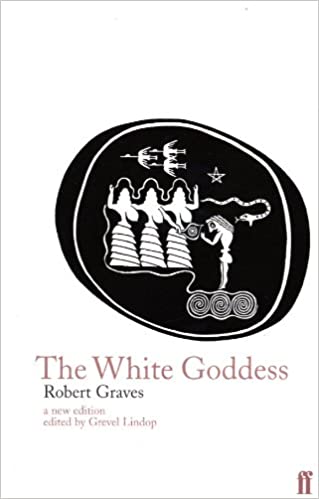
Graves’s critical method is quite undisciplined, and the book would have benefited from proper editing; but then again, it probably would have been impossible to edit this book properly. Graves is obsessed with the idea that all ‘true’ poetry is inspired by a ‘single poetic theme’, Goddess-worshship, and his book essentially consists of an unending effort to find evidence for this argument.
The key theme here is the role of ‘The White Goddess’, also referred to as the Triple Goddess, who recurs in most religious pantheons as a mother/wife figure, often in a triple aspect as mother, daughter, and crone (or as maiden, seductress, and hag). The argument is that in matriarchal society, before the development of agriculture and before the Bronze Age, this goddess was a prevailing archetype across most of Europe and indeed the wider world, whose primary position was overthrown by male gods over a period of time due to the rise of patriarchal society and the concomitant development of patriarchal religion. This goddess figure was thenceforth subjugated in her commonly known forms such as Isis, Hera/Juno, Frigg/Freya, etc.
The central idea is that there exists a single fundamental story on a global scale, an essential motif in mythology and in all “true” poetry.
TWO MEN CONTEND FOR THE LOVE OF A POWERFUL WOMAN.
The woman is the White Goddess of the title. The men are the demigods of Summer and Winter, and their battle is an allegory of the changing of the seasons. Every other story, fictional or otherwise, is a part of or a retelling of or a distortion of this central truth. The wealth of examples used by Graves is astonishing; even the Scriptures can be interpreted in the light of it.
Graves assembles his argument by cracking the code of two ancient Welsh poems. “The Battle of the Trees” (Cad Goddeu) and “The History of Taliesin” (Hanes Taliesin) are found to conceal two mystical alphabet-cum-calendar charms, Celtic equivalents of the Norse Runes. These charms are the means by which the story of the eternal love triangle is preserved, and they also hide the names of two Celtic deities, theoretically in conflict in the fourth century BC. The process by which the decoding is made is brilliant, erudite, and academically outrageous- no University would sanction it. And yet, Graves is certainly on to something.
Buy the book here: The White Goddess
